Your business is starting to look at implementing a Master Data Management (MDM) solution and have a basic idea of what MDM is about. However, what does it mean to have an Operational or Analytical MDM solution – and which does your business need?
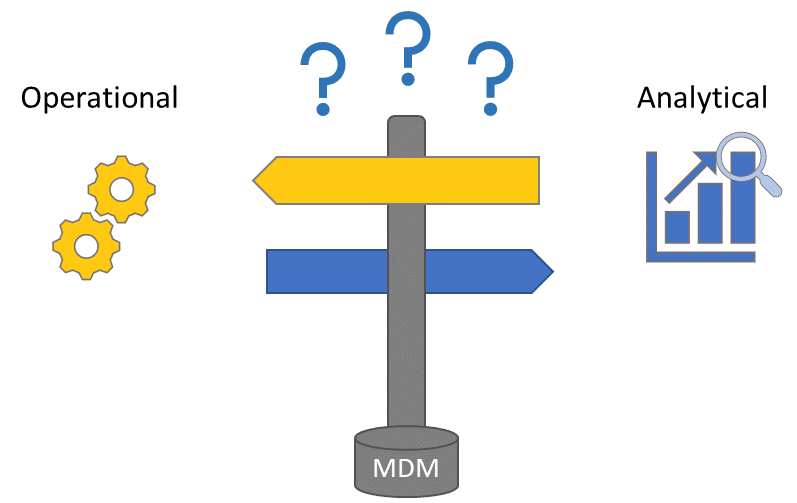
In this article we will explore:
- What is Analytical MDM, its features and functions?
- What is Operational MDM, its features and functions?
- Visual summary of Analytical vs Operational MDM – an overview
- Understand which MDM solution is right for your organisation
Let’s get into it!
When it comes to Master Data Management, there are two main overarching approaches. For those who are more visual like me, the diagram below gives you a high-level overview of an Operational and Analytical MDM approach.
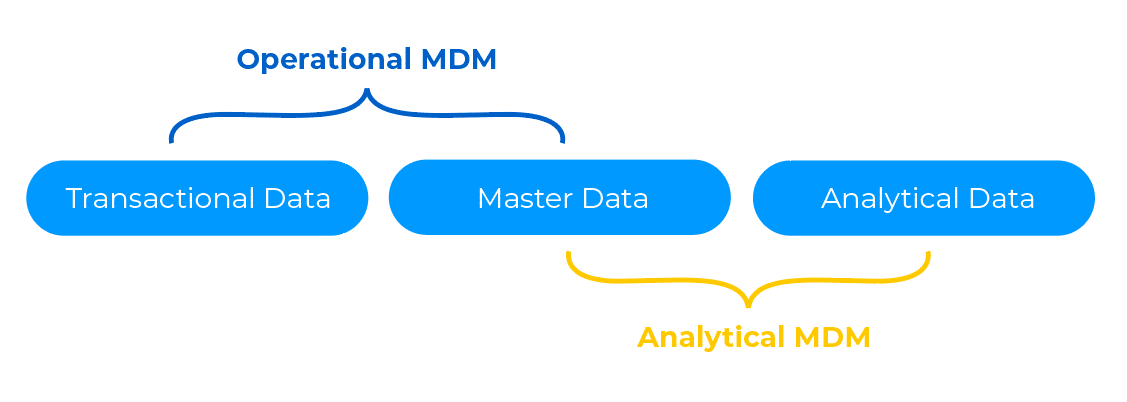
Let’s review each style in detail to help you better understand which is right for you.
What is Analytical Master Data Management (MDM)?
The core objective of Analytical MDM is to ensure a “single view” of master data is propogated in the downstream data warehouse, which is most often used to supply data for business intelligence (BI) and predictive analytics.
In short, Analytical MDM is used to support a company’s decision making.
If you compare Analytical vs Operational MDM, Analytical MDM is lightweight and simple to implement. However, it will not provide you with better data quality in originating systems that can promote operational and administrative efficiencies.
If Analytical MDM is the preferred solution, the two most common Master Data Management hub styles for Analytical MDM are Registry Style and Consolidation Style.
Registry Style
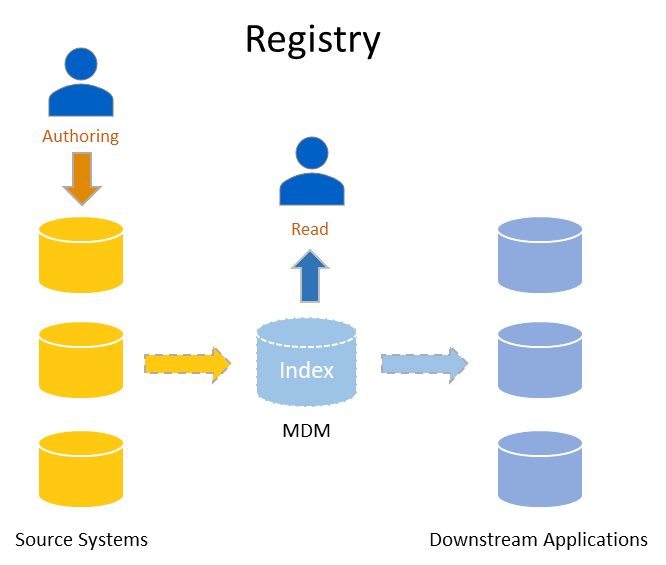
Registry style is mainly used for identifying the duplicates. All the data from multiple source systems are pulled into the MDM hub. Working it’s magic, MDM would then review the data, run cleansing and matching algorithms, assign a unique identifier to duplicate records and finally establish the single version of truth.
The hub stores an index of this source data, keeping track of the cross-references between matching source data.
The major benefit of this approach is the MDM will not touch your source systems and is non-intrusive. This style allows read-only access to the golden records (single source of truth) via federated queries. Downstream applications such as data warehouse and reporting systems can use cleansed and standardised master data.
Registry style is a cost-effective and light-weight way of implementing MDM but with some limited drawbacks such as latency.
Consolidation Style
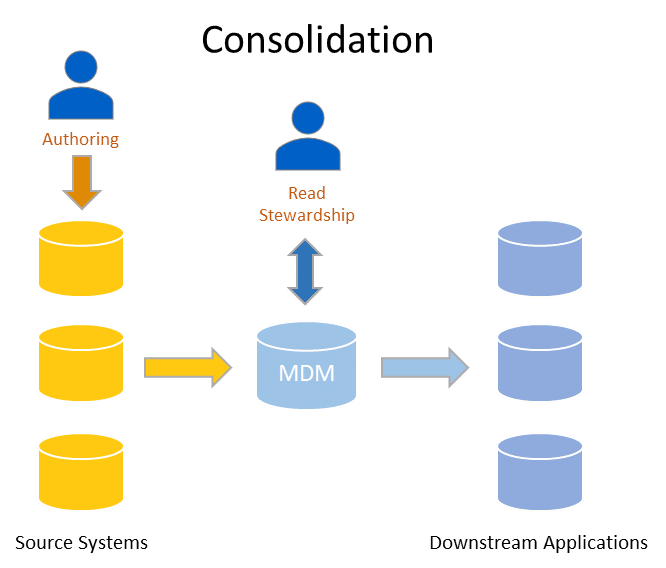
Moving to the consolidation approach (still non-intrusive), the master data is copied from source applications, then matched and consolidated in the hub.
The golden records are physically created in the hub and become available for distribution to downstream applications or for direct consumption by business users and data stewards.
What are data stewards?
With the added capability in the MDM hub called “stewardship” or the human component of the MDM process, the data stewards have the ability to make data entries (for fixing data issues), deal with duplicates handling (for false matches or specific matching cases) and carry out reject management.
A consolidation approach with its stewardship capability is a great way of taking centrally stored master data and using it for analysis and reporting.
What is Operational Master Data Management (MDM)?
The core objective of Operational MDM is to ensure a “single view” of master data in the core systems used by the business users (eg, finance, purchasing, accounts payable, payroll, sales, service, order management and manufacturing).
It is where master data (eg, customer, product, employee, asset and vendor) is first created, and often considered a common source of concern for many organisations since this is where poor MDM process integrity originates.
Heavy usage of integration technologies is often utilised to keep systems in sync, but they fail to address the master data issues as they arise.
Unlike Analytical MDM, Operational MDM connects the critical enterprise applications such as CRM and ERP. Therefore, having solid data governance and data stewardship is very important.
Operational MDM also needs to deal with privacy, security and regulatory compliance.
The two most common Master Data Management hub styles for Operational MDM are Co-Existence/Hybrid Style and Centralised/Transactional Style.
Co-existence/Hybrid Style
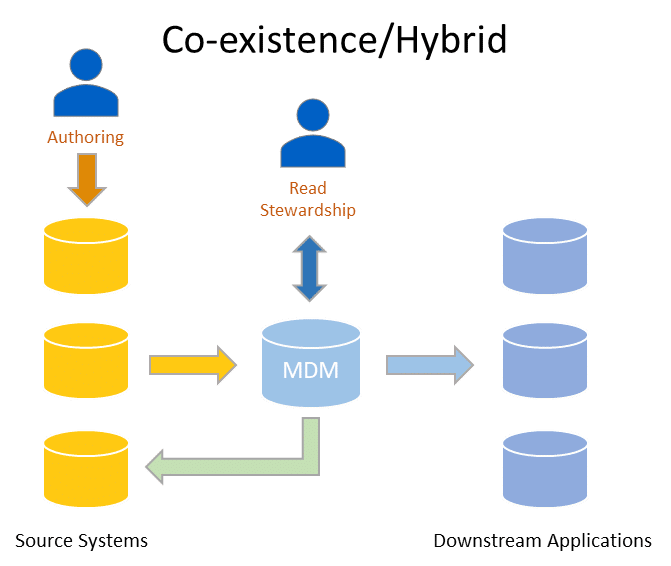
A co-existence style is like the consolidation hub used for Analytical MDM – but in a more evolved form. It adds an integration loop back to the source systems for golden records.
In other words, it sends back the golden records to each respective source systems so that you can now have real-time synchronisation between the MDM hub and sources. This provides updates in both.
Master data quality also improves as part of this, but to approve and implement the integration loop, the business must tackle certain organisational and technical challenges such as changes to existing business processes and compatibility between different technologies.
Centralised/Transactional Style
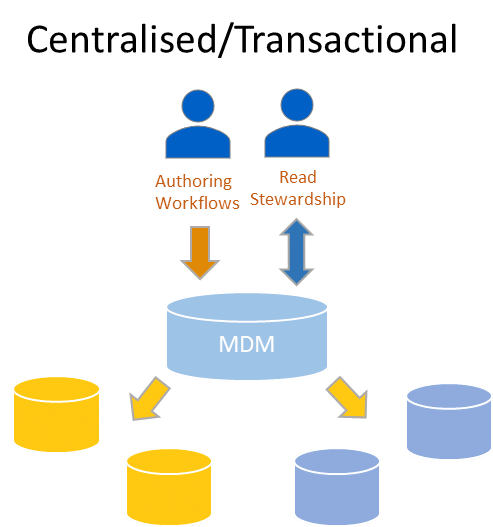
As the name suggests, in the centralised style, the hub becomes the single (centralised) provider of master data which is completely authored in the hub. All systems refer to the hub for their master data.
Although this style guarantees the highest level of master data quality, it is also the most intrusive of all the styles and highly resource/time intensive.
Existing business and technical processes need to revolve around the MDM hub. Basically, all systems are obliged to subscribe to the hub for any update for their master data.
Considering a Master Data Management technology? With Profisee, you have the flexibility to implement Analytical MDM, Operational MDM or both.
Summary of Analytical MDM and Operational MDM in a visual diagram
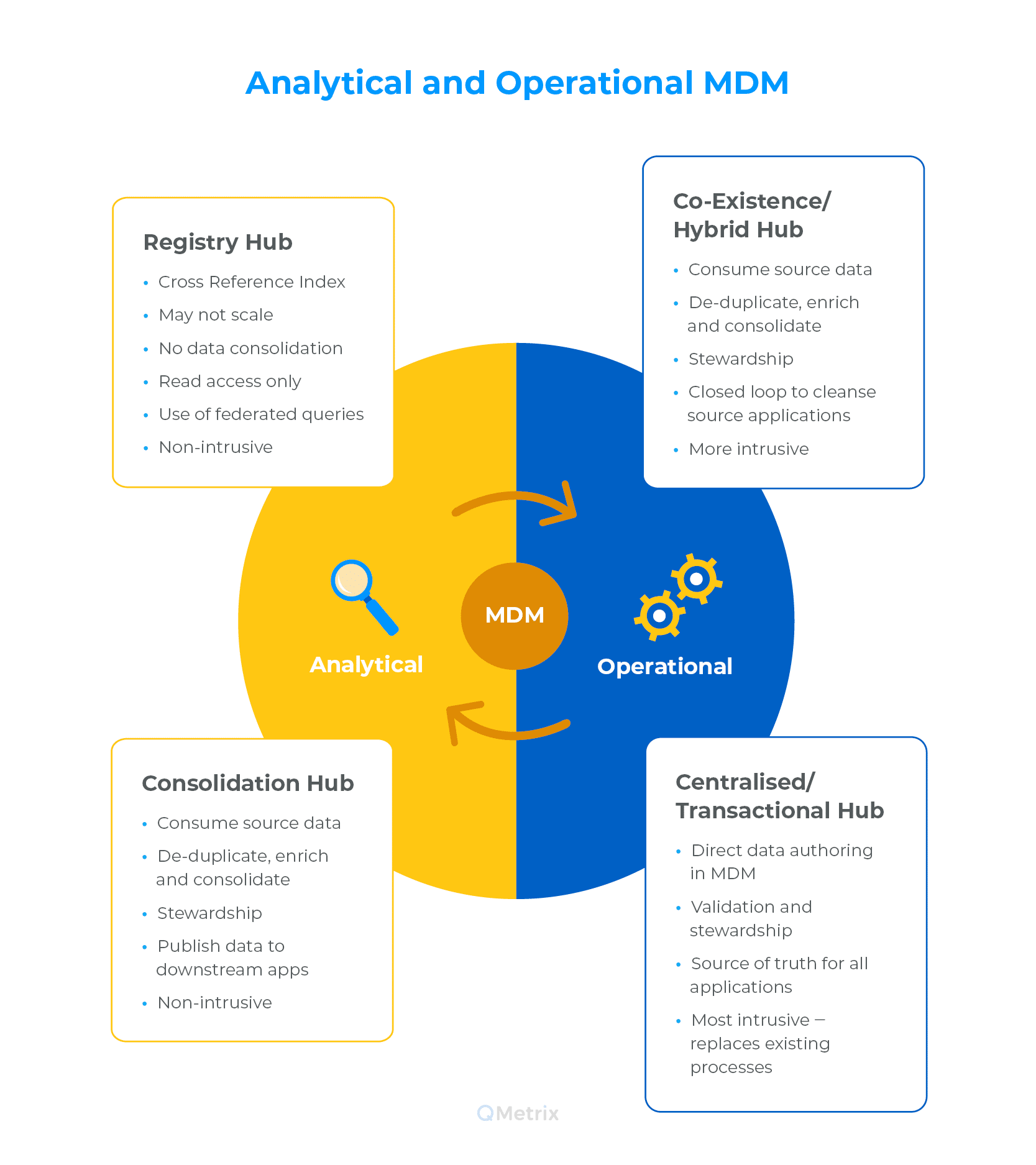
So which MDM solution is right for me?
The first and most important step is to determine if the business needs Analytical or Operational MDM. Once that has been decided, the MDM hub style can be selected by evaluating the pros and cons of each approach.
It should be noted that an Operational MDM implementation requires the most buy-in from business stakeholders as it is the most intrusive in terms of real business transformation and has the highest change management complexity of all approaches.
Of course, it will also yield the highest potential pay-off.
In contrast, Analytical MDM will enable the business to quickly make a significant impact with respect to reporting and BI, and will educate stakeholders about the benefits of MDM. This may in turn promote the merits of an Operational MDM solution in the future.
Your MDM project plan will be influenced by requirements, priorities, resource availability, time frame and the size of the challenge.
As a high-level guide, most MDM projects include at least these phases:
- Identify sources of master data
- Identify the producers and consumers of the master data
- Collect and analyse metadata for your master data
- Appoint data stewards
- Implement a data governance program and data governance council
- Develop the master data model
- Choose a toolset
- Design the infrastructure
- Generate and test the master data
- Modify the producing and consuming systems
- Implement maintenance processes
Just getting started on your MDM journey? Read 9 Steps to Getting Started with MDM
Still not sure which is the right MDM approach for you?
We understand MDM can be a big and complex endeavour. At QMetrix we have implemented highly successful MDM solutions for medium to large organisations such as Australia Post and Origin Energy, using Profisee Master Data Management technology.
If you are considering MDM solutions, Profisee is the fastest growing Master Data Management software and #1 Time-to-Value MDM in the market.
Call us on 1300 785 336 or contact us to get in touch and learn how QMetrix can help your organisation at the crossroad of choosing a MDM solution that is just ‘right’ for you.



